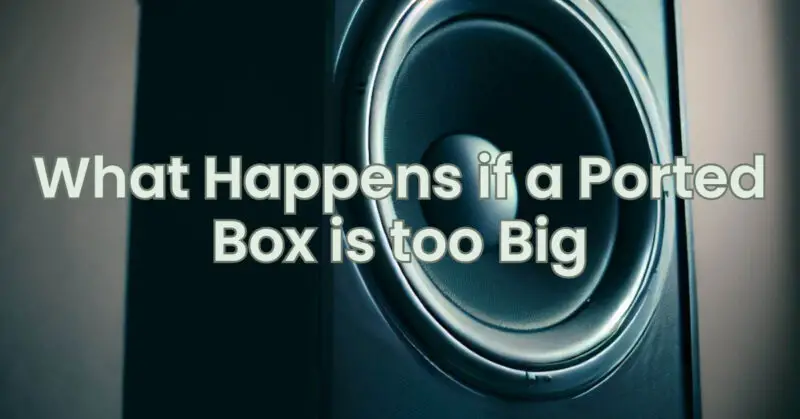Ported enclosures, also known as bass reflex enclosures, are popular among audio enthusiasts for their ability to produce powerful and extended low-frequency output. However, it is essential to ensure that the ported box is properly sized to achieve optimal performance. In this article, we will discuss what happens if a ported box is too big and the potential consequences it may have on the subwoofer’s performance and overall audio quality.
- Understanding Ported Enclosures: Before diving into the effects of an oversized ported box, let’s briefly review the basics of ported enclosures:
a. Ported Enclosure Design: Ported enclosures consist of a speaker driver (subwoofer) and a specifically tuned port or vent. The port allows the rear soundwaves from the subwoofer to exit the enclosure, resulting in increased efficiency and extended low-frequency response.
b. Box Volume and Port Tuning: The size of the enclosure and the port dimensions (length, diameter) play a crucial role in determining the box volume and port tuning frequency. These parameters are typically specified by the subwoofer manufacturer or can be calculated using enclosure design software.
- Effects of an Oversized Ported Box: If a ported box is too big, it can lead to several undesirable effects:
a. Reduced Low-Frequency Output: An oversized box can lower the overall system efficiency and reduce the output of low-frequency bass. This occurs because the subwoofer requires a specific box volume and port tuning to generate optimal bass response.
b. Poor Bass Extension: A larger enclosure can result in a loss of bass extension, meaning that the subwoofer will struggle to reproduce deep and powerful low-frequency sounds. The bass may sound weak or lack the desired impact.
c. Muddy or Boomy Bass: An oversized ported box can cause the bass to become boomy, uncontrolled, or muddy. This is due to the imbalance between the subwoofer’s driver characteristics and the larger box volume, which can lead to excessive cone excursion and distortion.
d. Impaired Transient Response: Transient response refers to the ability of the subwoofer to accurately reproduce quick, dynamic changes in the bass content. A too-large ported box can compromise the subwoofer’s transient response, resulting in sluggish or blurred bass notes.
- Proper Box Sizing and Tuning: To ensure optimal performance from a ported box, it is crucial to follow these guidelines:
a. Subwoofer Manufacturer Specifications: Refer to the manufacturer’s recommendations for the recommended box volume and port dimensions for your specific subwoofer model.
b. Thiele/Small Parameters: Take into account the subwoofer’s Thiele/Small parameters, which provide valuable information for designing a correctly sized ported enclosure.
c. Enclosure Design Software: Utilize enclosure design software to calculate the ideal box volume, port dimensions, and port tuning frequency based on the subwoofer’s specifications.
- Custom-Built Enclosures: If building a custom ported enclosure, consult with an experienced audio professional or use reliable enclosure design resources to ensure the box is properly sized and tuned for optimal performance.
Using an oversized ported box can have significant repercussions on the performance and audio quality of a subwoofer. Reduced low-frequency output, poor bass extension, muddy or boomy bass, and impaired transient response are common issues that can arise when the box is too big. To avoid these problems, it is crucial to adhere to the subwoofer manufacturer’s recommendations, consider the Thiele/Small parameters, and utilize enclosure design software when designing or selecting a ported box. Achieving the correct box volume and port tuning is vital to ensure optimal bass response, proper system efficiency, and an enjoyable listening experience.

